Archives - Page 2
-
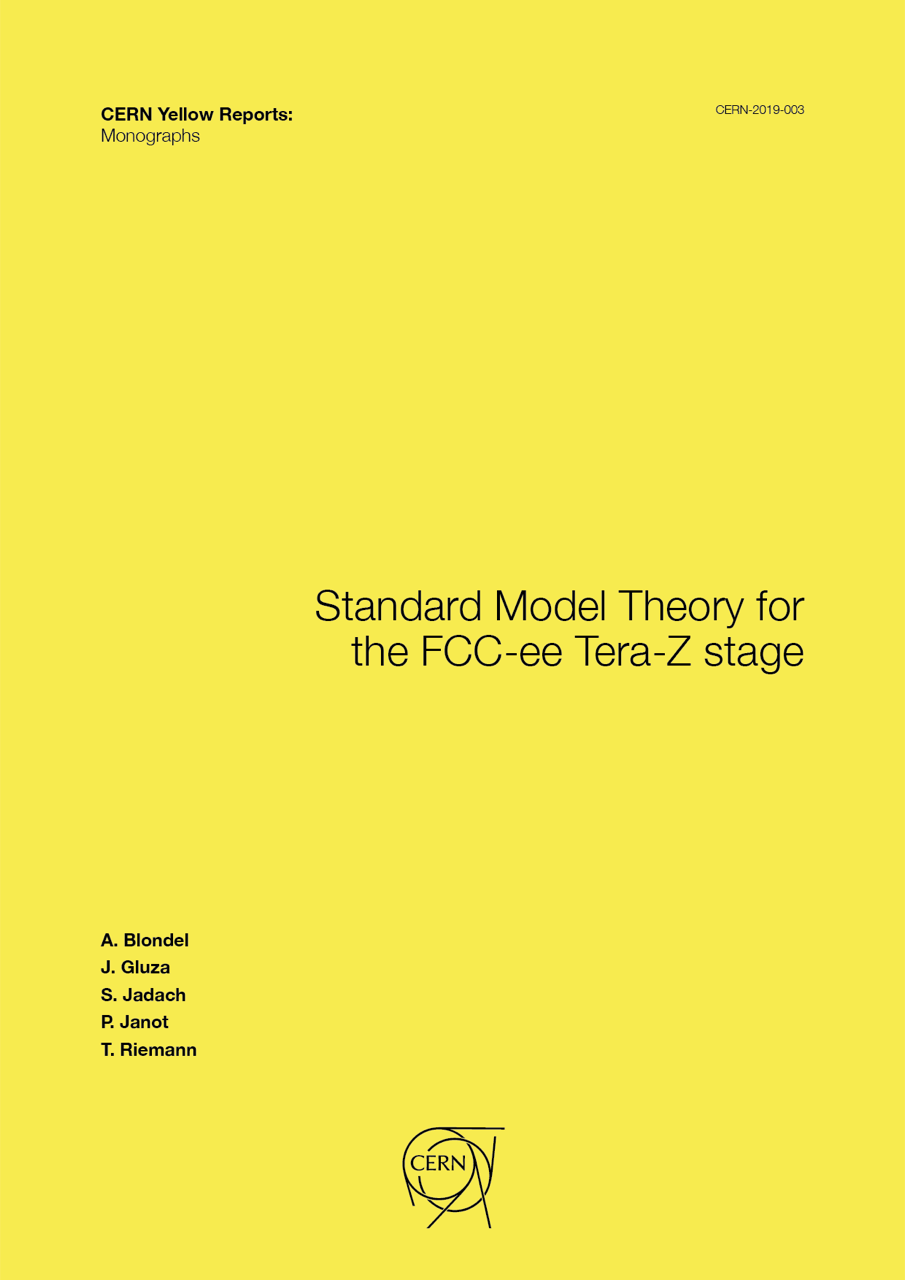
Standard Model Theory for the FCC-ee Tera-Z stage
Vol. 3 (2019)Report on the Mini Workshop Precision EW and QCD Calculations for the FCC Studies: Methods and Tools, 12–13 January 2018, CERN, Geneva. -
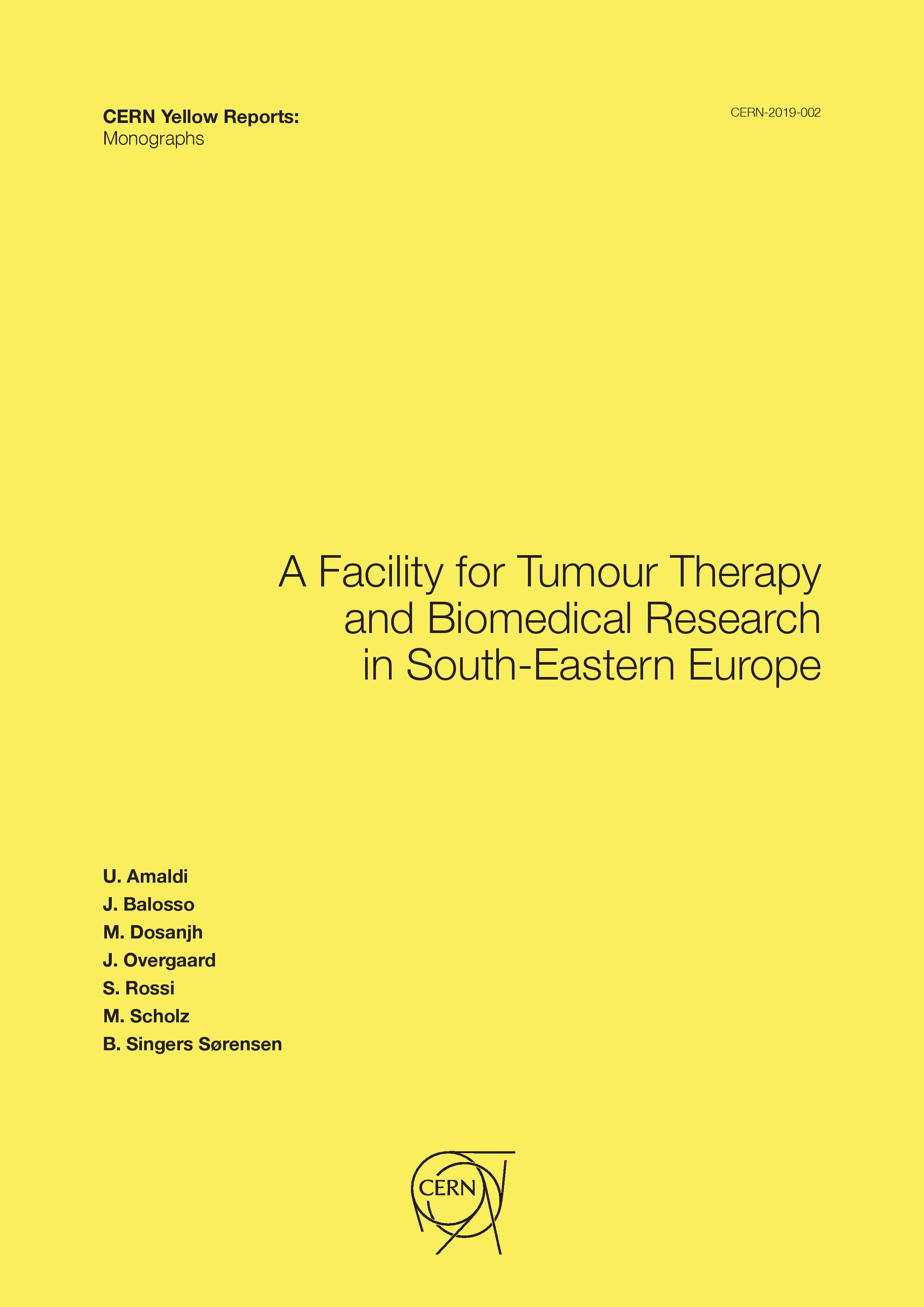
A Facility for Tumour Therapy and Biomedical Research in South-Eastern Europe
Vol. 2 (2019)Editor: Ugo Amaldi
In 2016 the South East European International Institute for Sustainable Technologies (SEEIIST) was proposed by Herwig Schopper and brought to the political level by Sanja Damjanovic, Minister of Science of Montenegro. In this framework two design studies have been completed by two groups of European experts: a "4th Generation Synchrotron Light Source for Science and Technology" (SRL) and a "Facility for Tumour Hadron Therapy and Biomedical Research" (HTR). A preliminary report was presented and discussed at the Workshop on "New International Research Facilities for South East Europe" held in January 2017 at ICTP (Trieste). In March 2018 the Steering Committee came unanimously to the conclusion that the first facility to be built should be the HTR. This report contains the HTR study, which was completed in July 2018; the Executive Summary has been written for the readers who are not interested in the details.
-
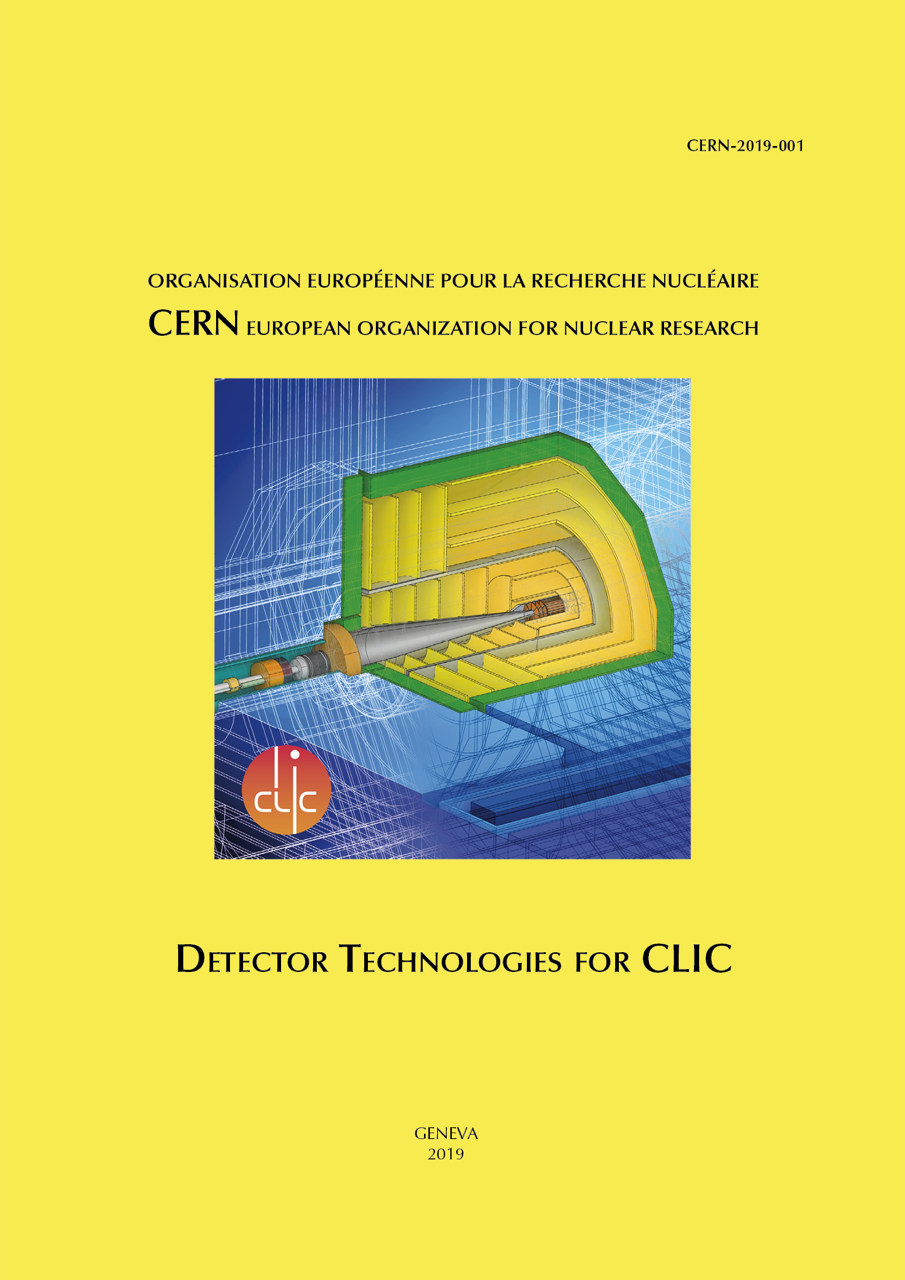
Detector Technologies for CLIC
Vol. 1 (2019)Editors: D. Dannheim, K. Krüger, A. Levy, A. Nürnberg, E. Sicking
The Compact Linear Collider (CLIC) is a high-energy high-luminosity linear electron–positron collider under development. It is foreseen to be built and operated in three stages, at centre-of-mass energies of 380 GeV, 1.5 TeV and 3 TeV, respectively. It offers a rich physics program including direct searches as well as the probing of new physics through a broad set of precision measurements of Standard Model processes, particularly in the Higgs-boson and top-quark sectors. The precision required for such measurements and the specific conditions imposed by the beam dimensions and time structure put strict requirements on the detector design and technology. This includes low-mass vertexing and tracking systems with small cells, highly granular imaging calorimeters, as well as a precise hit-time resolution and power-pulsed operation for all subsystems. A conceptual design for the CLIC detector system was published in 2012. Since then, ambitious R&D programmes for silicon vertex and tracking detectors, as well as for calorimeters have been pursued within the CLICdp, CALICE and FCAL collaborations, addressing the challenging detector requirements with innovative technologies. This report introduces the experimental environment and detector requirements at CLIC and reviews the current status and future plans for detector technology R&D.
-
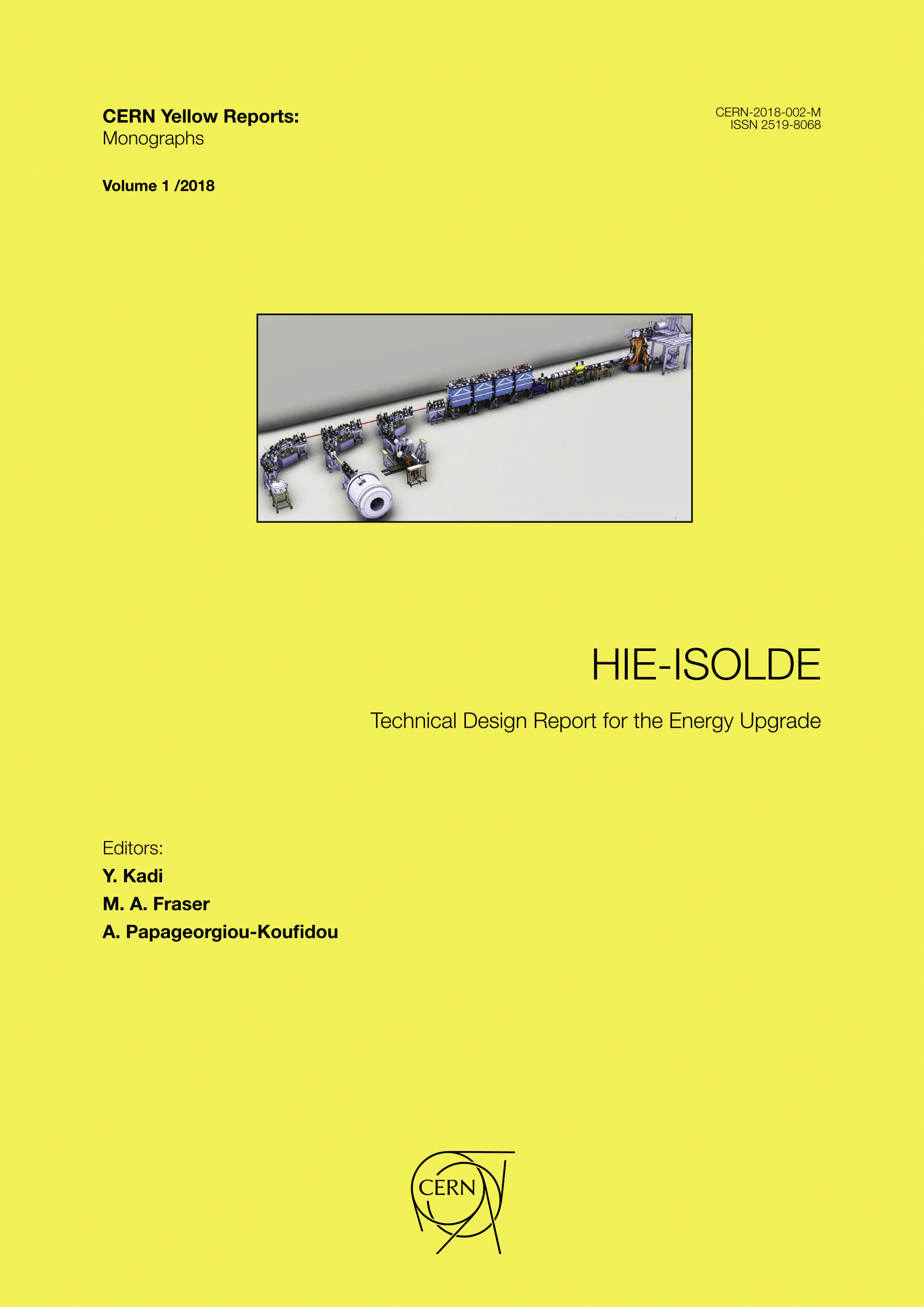
HIE-ISOLDE : Technical Design Report for the Energy Upgrade
Vol. 1 (2018)edited by Y. Kadi, M. A. Fraser, A. Papageorgiou-Koufidou
CERN-2018-002-M, 978-92-9083-492-2 (paperback), 978-92-9083-493-9 (PDF)
The Isotope mass Separator On-Line facility (ISOLDE) at CERN occupies a leading position in the field of radioactive ion beams research, as it can produce the largest range of isotopes worldwide —over 1000 isotopes of more than 70 elements. HIE-ISOLDE (High Energy and Intensity – ISOLDE) is an upgrade that aims to increase the facility’s energy and intensity reach, opening the way to new opportunities in multiple fields of physics: nuclear and atomic physics, astrophysics and fundamental interactions. This technical design report presents the HIE-ISOLDE energy upgrade as built. The report is divided in six parts. The first details the motivation behind the project, as well as previous experiences with post-accelerated beams at the facility. The second part presents the design of the new linear accelerator and its components, including cryomodules, superconducting cavities and solenoids, while the third focuses on beam dynamics. General services and systems are presented in the fourth part, while the fifth and sixth concern safety procedures and commissioning respectively. -
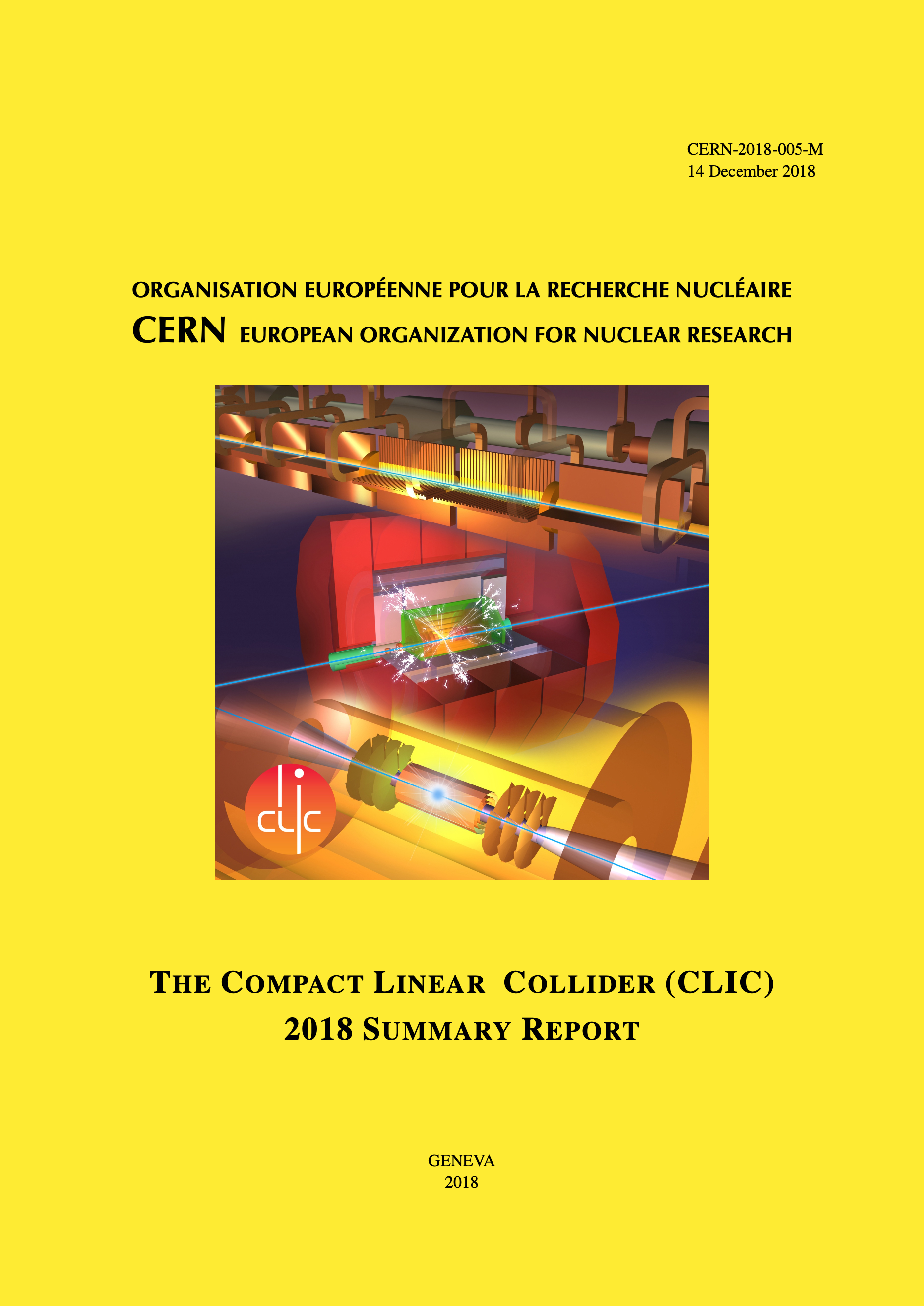
The Compact Linear Collider (CLIC) - 2018 Summary Report
Vol. 2 (2018)Corresponding editors: Philip N. Burrows (University of Oxford), Nuria Catalán Lasheras (CERN), Lucie Linssen (CERN), Marko Petrič (CERN), Aidan Robson (University of Glasgow), Daniel Schulte (CERN), Eva Sicking (CERN), Steinar Stapnes (CERN)
Abstract: The Compact Linear Collider (CLIC) is a TeV-scale high-luminosity linear e+e- collider under development at CERN. Following the CLIC conceptual design published in 2012, this report provides an overview of the CLIC project, its current status, and future developments. It presents the CLIC physics potential and reports on design, technology, and implementation aspects of the accelerator and the detector. CLIC is foreseen to be built and operated in stages, at centre-of-mass energies of 380 GeV, 1.5 TeV and 3 TeV, respectively. CLIC uses a two-beam acceleration scheme, in which 12 GHz accelerating structures are powered via a high-current drive beam. For the first stage, an alternative with X-band klystron powering is also considered. CLIC accelerator optimisation, technical developments and system tests have resulted in an increased energy efficiency (power around 170 MW) for the 380 GeV stage, together with a reduced cost estimate at the level of 6 billion CHF. The detector concept has been refined using improved software tools. Significant progress has been made on detector technology developments for the tracking and calorimetry systems. A wide range of CLIC physics studies has been conducted, both through full detector simulations and parametric studies, together providing a broad overview of the CLIC physics potential. Each of the three energy stages adds cornerstones of the full CLIC physics programme, such as Higgs width and couplings, top-quark properties, Higgs self-coupling, direct searches, and many precision electroweak measurements. The interpretation of the combined results gives crucial and accurate insight into new physics, largely complementary to LHC and HL-LHC. The construction of the first CLIC energy stage could start by 2026. First beams would be available by 2035, marking the beginning of a broad CLIC physics programme spanning 25-30 years.
-
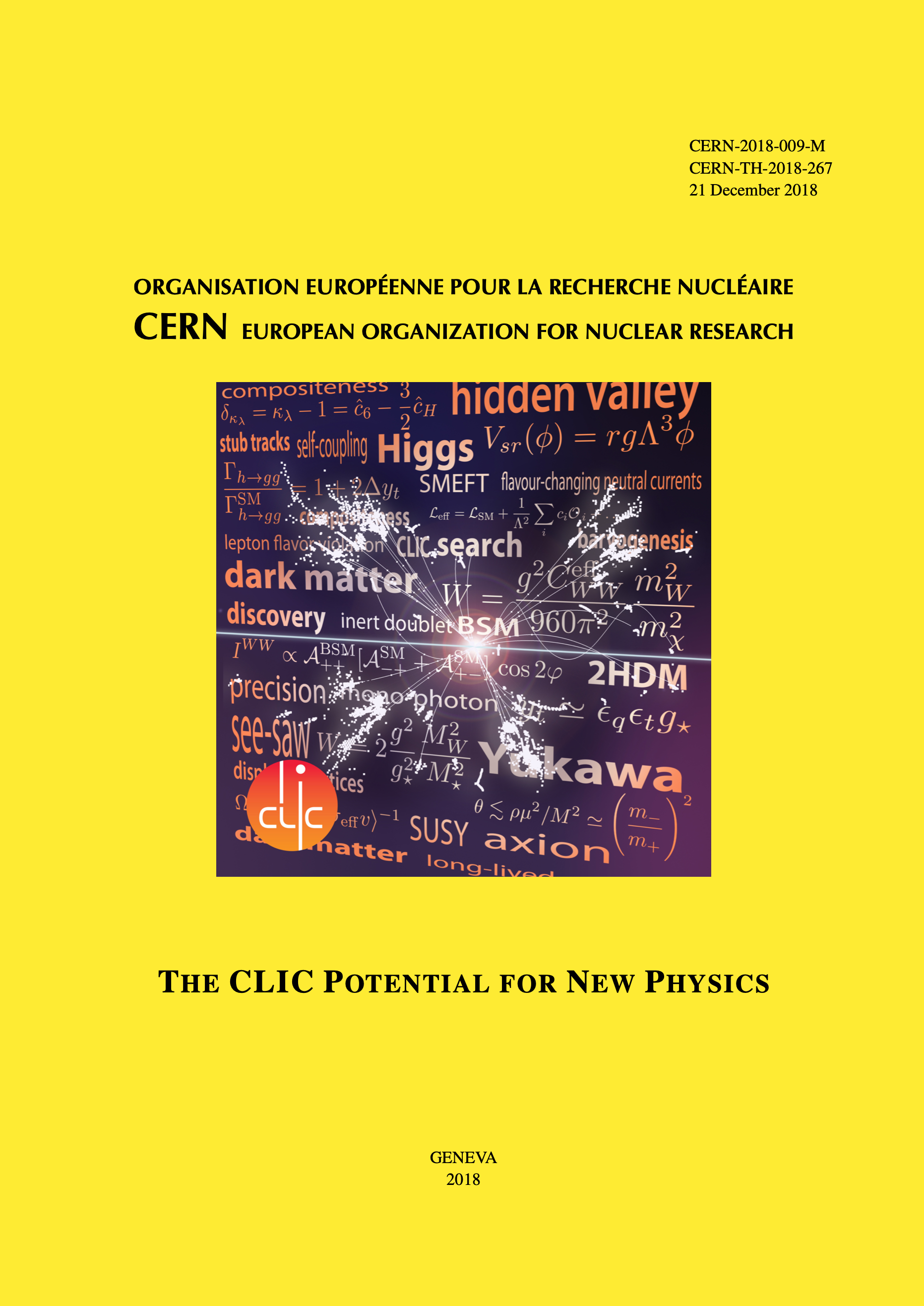
The CLIC potential for new physics
Vol. 3 (2018)Corresponding editors: J. de Blas, R. Franceschini, F. Riva, P. Roloff, U. Schnoor, M. Spannowsky, J. D. Wells, A. Wulzer and J. Zupan
Abstract: The Compact Linear Collider (CLIC) is a mature option for the future of high energy physics. It combines the benefits of the clean environment of e+e− colliders with operation at high centre-of-mass energies, allowing to probe scales beyond the reach of the Large Hadron Collider (LHC) for many scenarios of new physics. This places the CLIC project at a privileged spot in between the precision and energy frontiers, with capabilities that will significantly extend knowledge on both fronts at the end of the LHC era. In this report we review and revisit the potential of CLIC to search, directly and indirectly, for physics beyond the Standard Model.
-
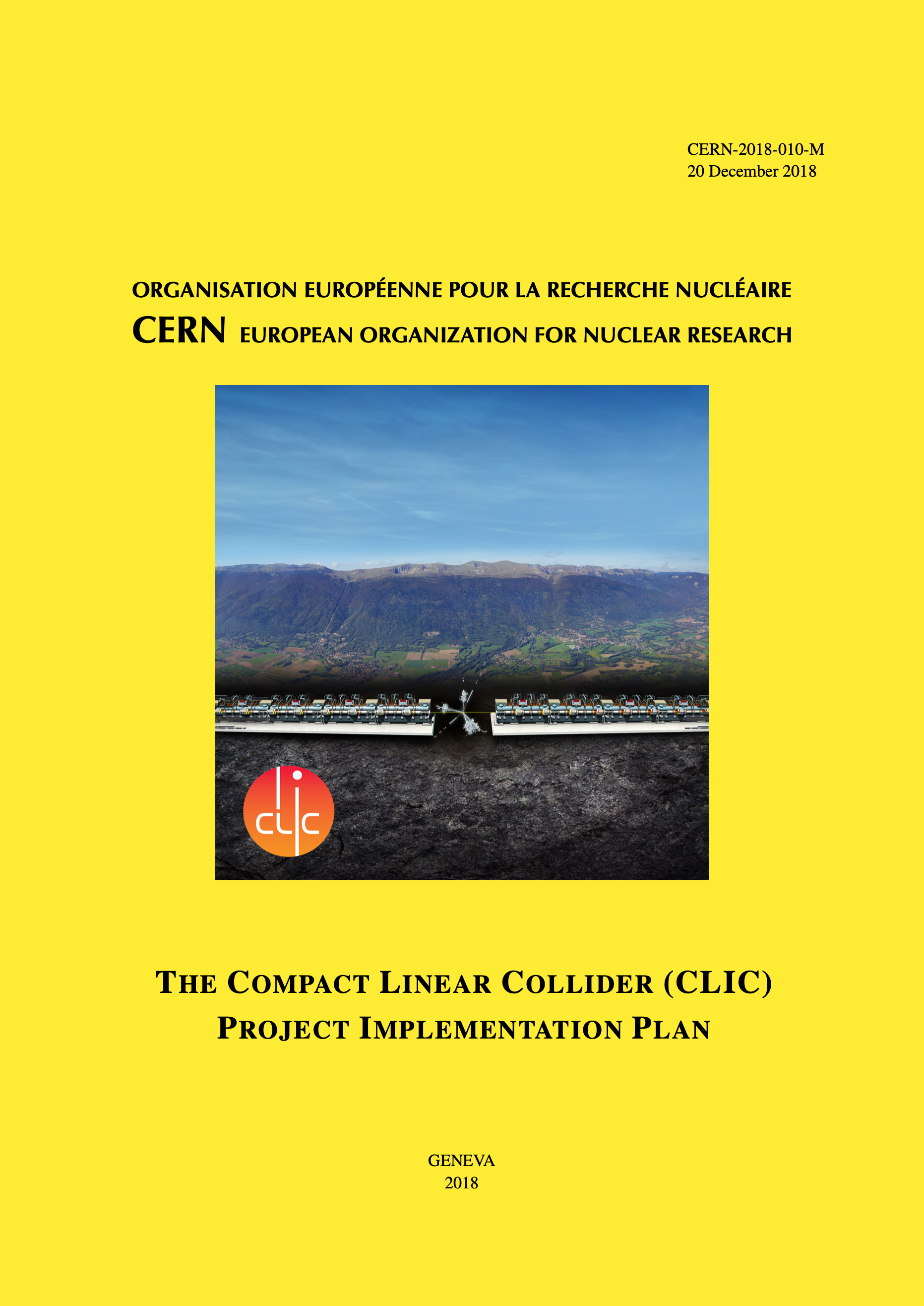
The Compact Linear Collider (CLIC) – Project Implementation Plan
Vol. 4 (2018)Edited by: M. Aicheler, P.N. Burrows, N. Catalan, R. Corsini, M. Draper, J. Osborne,D. Schulte, S. Stapnes and M.J. Stuart
Abstract: The Compact Linear Collider (CLIC) is a TeV-scale high-luminosity linear e+e- collider under development by international collaborations hosted by CERN. This document provides an overview of the design, technology, and implementation aspects of the CLIC accelerator. For an optimal exploitation of its physics potential, CLIC is foreseen to be built and operated in stages, at centre-of-mass energies of 380 GeV, 1.5 TeV and 3 TeV, for a site length ranging between 11 km and 50 km. CLIC uses a Two-Beam acceleration scheme, in which normal-conducting high- gradient 12 GHz accelerating structures are powered via a high-current Drive Beam. For the first stage, an alternative with X-band klystron powering is also considered. CLIC accelerator optimisation, technical developments, and system tests have resulted in significant progress in recent years. Moreover, this has led to an increased energy efficiency and reduced power consumption of around 170 MW for the 380 GeV stage, together with a reduced cost estimate of approximately 6 billion CHF. The construction of the first CLIC energy stage could start as early as 2026 and first beams would be available by 2035, marking the beginning of a physics programme spanning 25–30 years and providing excellent sensitivity to Beyond Standard Model physics, through direct searches and via a broad set of precision measurements of Standard Model processes, particularly in the Higgs and top-quark sectors.
-
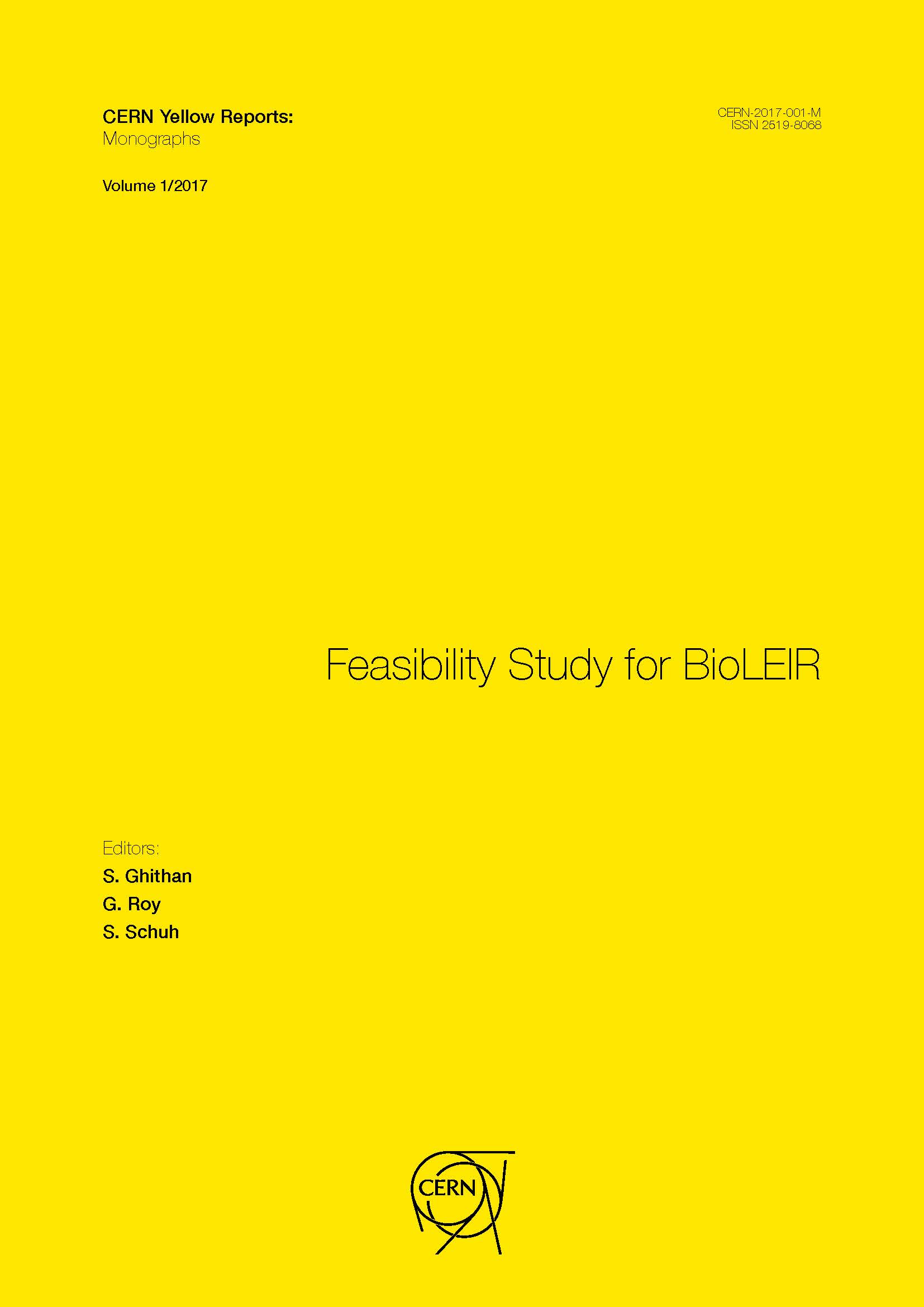
Feasibility Study for BioLEIR
Vol. 1 (2017)Edited by S. Ghithan, G. Roy, S. Schuh
CERN-2017-001-M, ISBN (Print) 978–92–9083–440–3, ISBN (PDF) 978–92–9083–441–0
-

Handbook of LHC Higgs cross sections: 4. Deciphering the nature of the Higgs sector
Vol. 2 (2017)Edited by D. de Florian, C. Grojean, F. Maltoni, C. Mariotti, A. Nikitenko, M. Pieri, P. Savard, M. Schumacher, R. Tanaka
CERN-2017-002-M, ISBN (Print) 978–92–9083–442–7, ISBN (PDF) 978–92–9083–443–4
-
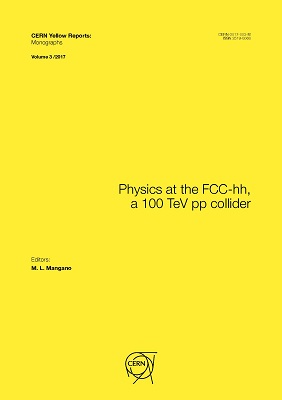
Physics at the FCC-hh, a 100 TeV pp collider
Vol. 3 (2017)Edited by M. L. Mangano
CERN-2017-003-M, ISBN (Print) 978–92–9083–453-3, ISBN (PDF) 978–92–9083–454-0
-
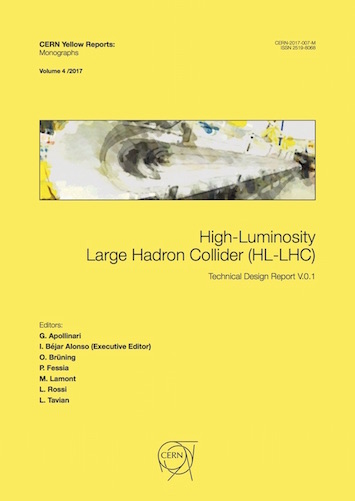
High-Luminosity Large Hadron Collider (HL-LHC) Technical Design Report V. 0.1
Vol. 4 (2017)edited by Apollinari G., Béjar Alonso I. (Executive Editor), Brüning O., Fessia P., Lamont M., Rossi L., Tavian L.
CERN-2017-007-M, ISBN 978-92-9083-470-0 (paperback), ISBN 978-92-9083-471-7 (PDF) -
Archive of CERN Yellow Reports: Monographs since 1955
You can find all monographs published since 1955 at this link.
